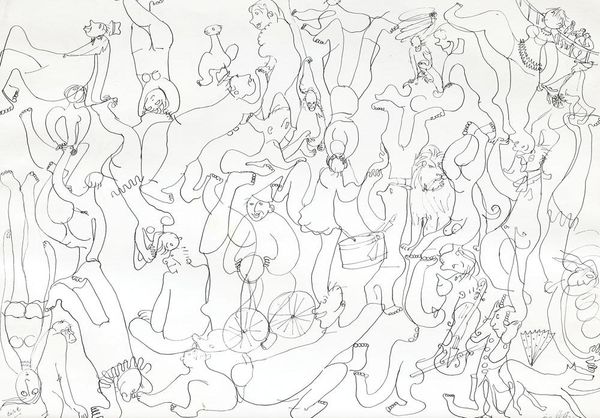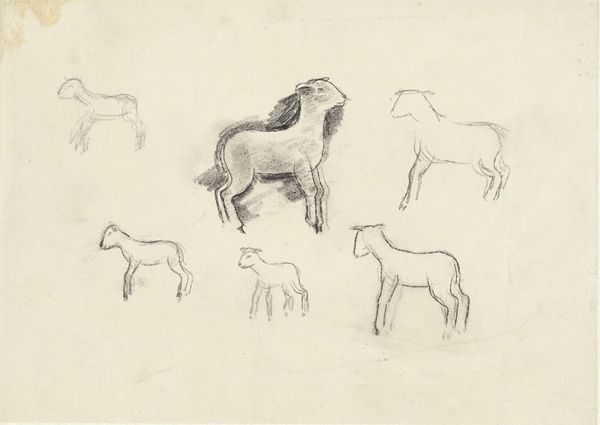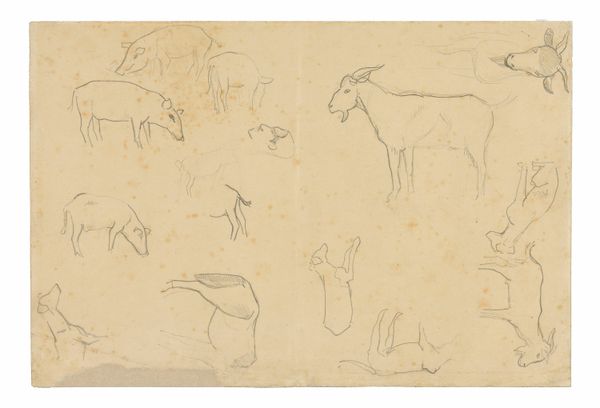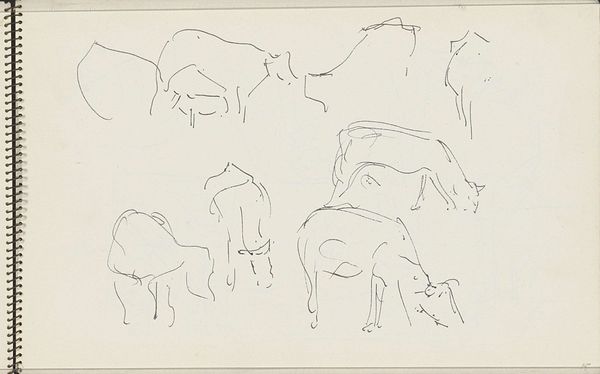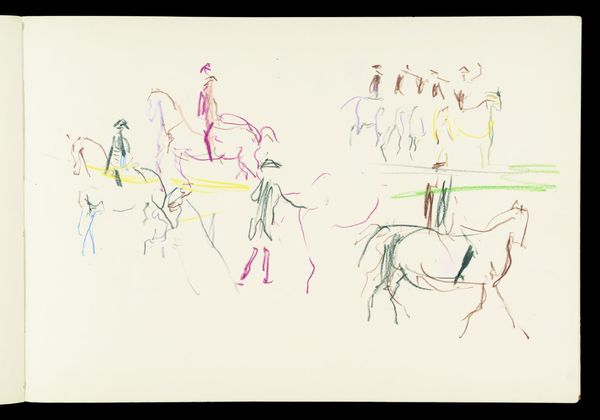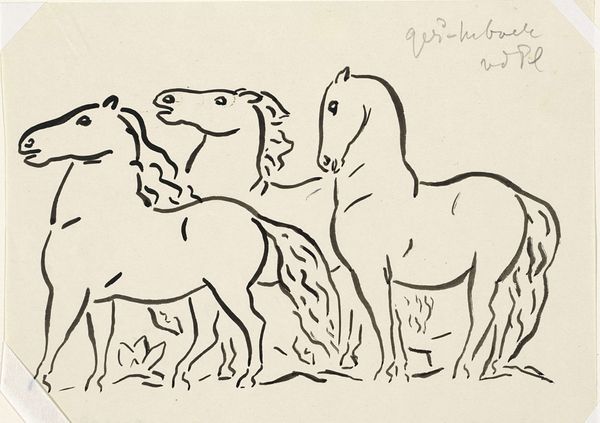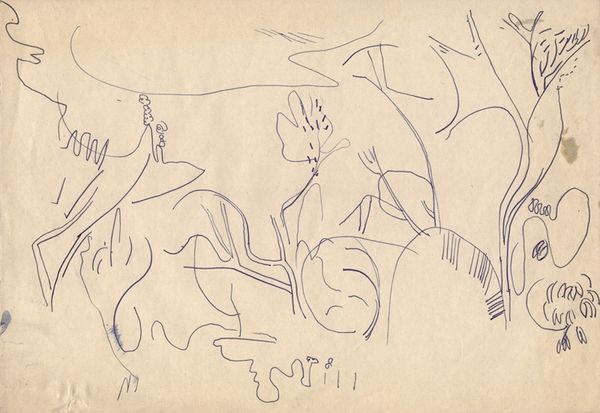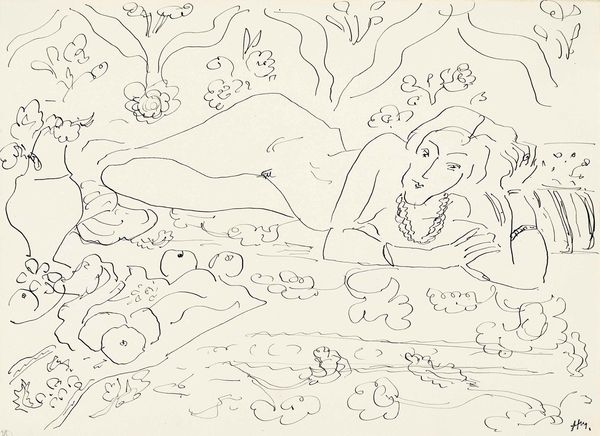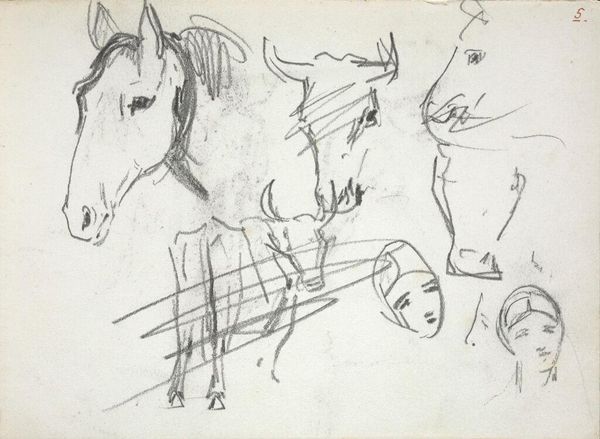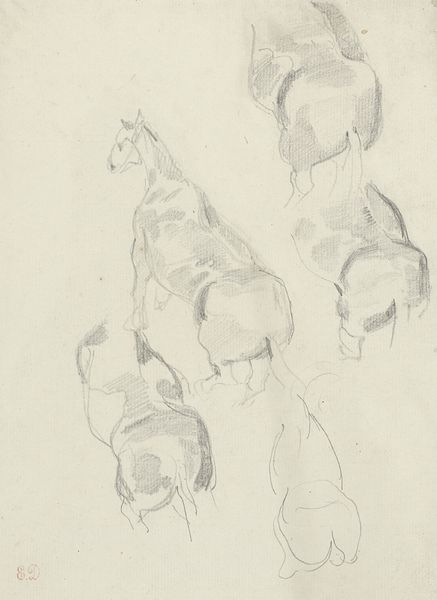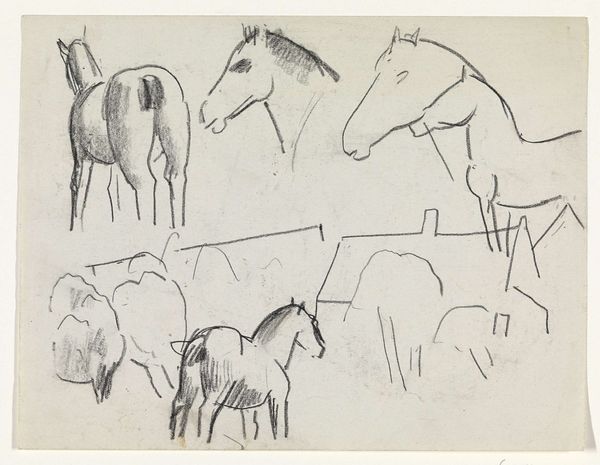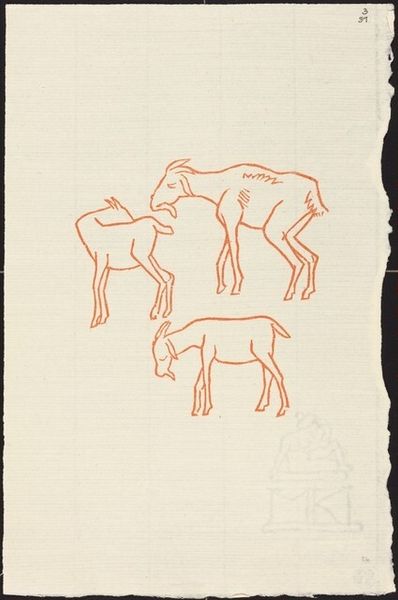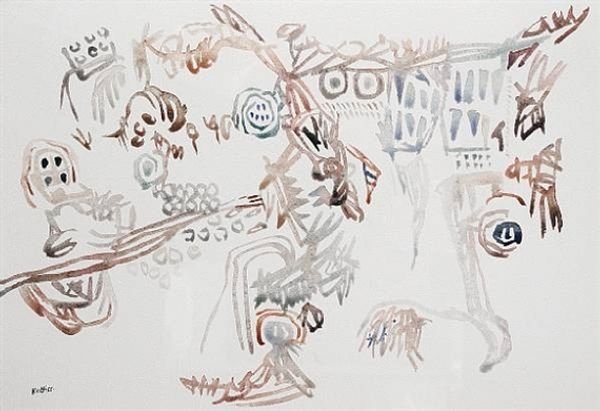
drawing, coloured-pencil, pencil
#
drawing
#
coloured-pencil
#
landscape
#
figuration
#
pencil
#
line
#
sketchbook drawing
#
modernism
Copyright: Walter Battiss,Fair Use
Curator: This drawing, simply titled "Colorado", was completed by Walter Battiss in 1977. He used both pencil and colored pencil to capture this scene. What are your initial impressions? Editor: It feels very immediate and breezy. A large group of horses grazing, all captured with such delicate lines, almost like a field sketch in someone's personal journal. Curator: That spontaneity aligns with Battiss's overall approach to artmaking. He very deliberately explored notions of freedom and even a kind of primal innocence throughout his career, positioning his artistic vision outside of societal constraints. We can consider the socio-political situation in South Africa during that time. This landscape of freely grazing horses subtly questions enforced boundaries and promotes a return to nature as a form of liberation. Editor: I agree, the looseness of the drawing style is key. Look at how the pencil marks remain visible. The layering of different colored pencils also adds depth, but the entire image is very much about the artist’s process and mark-making. The act of drawing feels front and center. It also strikes me that Battiss made this in 1977. I would be very interested to know the paper manufacturing process used. It's fascinating to consider how those kinds of elements, or the types of pencil and coloured-pencils available influenced the work’s final effect. Curator: Absolutely. I'm interested in what is implied by the apparent simplicity. What kind of commentary can be drawn from the setting of horses? One has to examine Battiss' interest in reclaiming a primordial innocence that existed before the colonial subjugation of land. It suggests a rejection of social control. He invites the viewer to see these horses not just as figures but also as emblems of a self-governing freedom. Editor: He is clearly challenging any preciousness around artistic practice by embracing a seemingly off-the-cuff method and focus on materials. Curator: Precisely, "Colorado" is deceptively profound. Battiss used it to engage in dialogue concerning freedom and the imposition of oppressive boundaries that he was surrounded by during that period. Editor: For me, this work highlights the intrinsic qualities of very accessible materials and methods, underlining how vital artmaking can be when one’s freedom is curtailed.
Comments
No comments
Be the first to comment and join the conversation on the ultimate creative platform.
